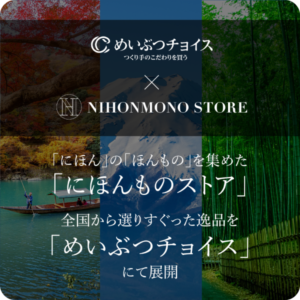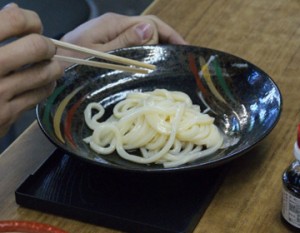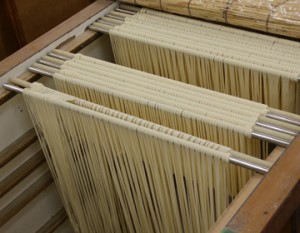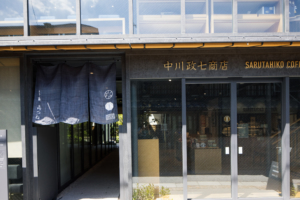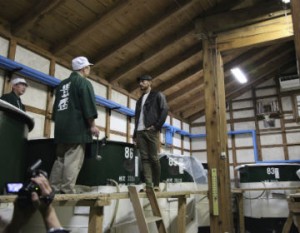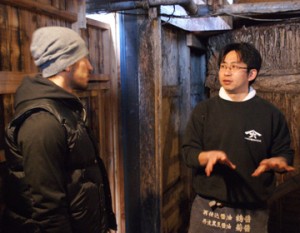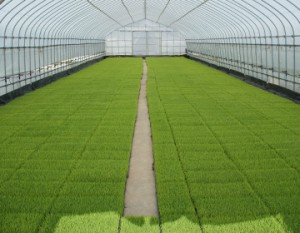Approximately 40 minutes by car from Hakata. Dazaifu City, located in the midwestern part of Fukuoka Prefecture, was the site of Dazaifu, an administrative institution that controlled Kyushu from the late 7th to the late 12th century. Dazaifu Tenmangu Shrine, dedicated to Sugawara no Michizane, known as the god of learning, was established here in 903 and continues to weave its history to this day.
The head shrine of Tenmangu Shrine, which enshrines “Tenjin-sama

Dazaifu Tenmangu Shrine is the head shrine of the approximately 10,000 Tenmangu shrines that exist throughout Japan. Tenmangu” is a shrine dedicated to Sugawara Michizane (the god of heaven), who lived during the Heian period (794-1185). What kind of person was Sugawara Michizane?
A man of learning and politics
Born into a family of scholars on June 25, 845, Sugawara no Michizane became familiar with waka poetry and Chinese poetry at an early age and developed his talents as a scholar in his youth. He was also a foresighted reformer, and was one of the first to foresee world affairs and abolish the Tang Dynasty’s envoys to China.
However, due to a plot by Fujiwara no Tokihira, who was jealous of his talent, he was exiled to Dazaifu, far away from Kyoto. Nevertheless, Michizane never bore a grudge against heaven or man, but prayed for the prosperity of the country and the safety of the emperor until the end of his life, which ended on February 25, 903, at the age of 59. Dazaifu Tenmangu Shrine is the tomb of Sugawara no Michizane, and has since become a place of prayer where he is revered as the god of heaven. The fact that the tomb and shrine are located in the same place is rare in Japan.
Toward the 1125th anniversary
Venerable shrines hold a shinkosai or rebuild their halls every few years or decades. At Dazaifu Tenmangu Shrine, it is every 25 years. The reason for this is that the number 25 is closely associated with Michizane, whose birthday is June 25 and the date of his death is February 25. In fact, it was on January 25th that he was ordered to leave the prefecture. The year 2027 will mark the 1,125th anniversary of Michizane’s death. Dazaifu Tenmangu Shrine is undergoing major renovation of the main shrine, an important cultural property, for the first time in 124 years in preparation for this year’s ceremonial grand festival.
From the nature-rich forests of Dazaifu
Major renovations will begin in 2023 and last approximately three years. During this period, the temporary hall was established as a place to welcome worshippers. The temporary shrine is designed by architect Sousuke Fujimoto, who is active both in Japan and abroad and is also the producer of the venue design for the 2025 Osaka-Kansai World Exposition. He visited Dazaifu many times and was impressed by the forest surrounding Tenmangu Shrine, which helped him to formulate his image for the building.
The Legend of Tobiume at Dazaifu Tenmangu Shrine

The idea was inspired by the “Tobibai Legend” of Dazaifu Tenmangu Shrine. When Michizane left Kyoto, he composed a farewell poem to the plum tree he had loved in the garden of his own residence, saying, “If the east wind blows, bring me a fragrance, plum blossoms, for I will remember spring even if my master is gone. The story goes that the plum blossoms flew to Dazaifu and took root there in just one night. This is where the concept of the temporary shrine, “a vast forest flew in front of the main shrine,” originated.
Incidentally, there are approximately 6,000 ume trees in the precincts of Dazaifu Tenmangu Shrine, which bloom beautifully from late January to early March each year. The ume fruits are harvested by the staff and sold as pickled plums and ume wine at the “Oshaku Omamori (talisman for good luck charms) Awarding Office.
Shaping Tenmangu in Co-Existence with Nature

The mitobari and kicho (folding screens) inside the temporary hall are also noteworthy. They were made by “Mame Kurogouchi,” a fashion brand that has exhibited at the Paris Collection and other fashion shows. Mr. Kurogouchi visited Dazaifu many times, and while consulting a variety of materials, he put together the concept for this project. The pattern depicted in the book is a scene he saw one rainy day when he took shelter from the rain in a hole in a camphor tree on the shrine’s grounds. The book also looks at the deep relationship between Dazaifu Tenmangu Shrine and nature, and uses threads dyed with plums and grasses from the shrine’s grounds. Using a modern loom, the intersection of the ancient and the modern was also woven into the expression.
To stay the same, keep changing
To reach the temporary shrine, visitors pass through the torii gate from the busy approach and cross three red drum bridges over Shinji-ike, a pond said to have been built by Michizane’s pupils. The bridges represent the past, present, and future from the front, and crossing over the water is said to be a way to purify the body and mind and to bring one closer to Tenjin-sama. After crossing the bridge, the dignified vermilion-lacquered tower gate rises up, and beyond the gate, the temporary shrine building, which is one with nature, is revealed.
When the renovation of the main hall is completed, the temporary hall will be dismantled, but the plants on the roof will return to the forest. The plants on the roof will return to the forest. During these three years, visitors may especially feel the Dazaifu Tenmangu Shrine’s value of “continuing to change in order to stay the same. In addition to worshipping at the shrine, visitors are encouraged to experience the divine virtues of Tenjin-sama through prayers recited by the priests in the temporary shrine.
Encounter art in the precincts of the temple
When you stroll through the shrine grounds after praying and visiting the shrine, you will see the treasure house that holds cultural properties related to Michizane and the access tunnel to the Kyushu National Museum, which was opened after 120 years of efforts by four generations of priests to attract the opening of the museum. Because Michizane excelled not only in learning but also in waka poetry and Chinese poetry, he is also known as a god of culture and the arts, and Dazaifu Tenmangu Shrine has devoted itself to various efforts in this field.
In 2006, the Dazaifu Tenmangu Art Program began, a project in which artists active in Japan and abroad are invited to Dazaifu to experience Shinto, Tenjin, and Dazaifu Tenmangu Shrine, and to incorporate what they feel into artwork that will last for 100 years or even 1,000 years. Some of the works created in the program are installed outdoors and can be viewed while strolling the shrine grounds, hence the name “precincts art museum.
Tour 10 unique works
On the right side of the approach to the shrine, past the torii gate, is an installation of British artist Ryan Gander’s work “Really shiny stuff that doesn’t mean anything ©Ryan Gander, 2011 Courtesy of TARO NASU. Ryan Gander, 2011 Courtesy of TARO NASU” is installed. Gander was struck by the sight of worshippers praying to “invisible things,” and this work represents that “invisible power” with magnetic force.
(The work may not be on display due to shrine events, etc.)

In the plum grove by the Treasure House is another work by Ryan Gander, “Everything is learned, VI Everything is understood VI ©Ryan Gander, 2011 Courtesy of TARO NASU. At first glance, it appears to be a “rock” with the top worn off, but it is an imaginative representation of Rodin’s sculpture “The Thinker,” who contemplated on the stone, got up, said “I understand everything,” and left. Other works include Lawrence Weiner’s “THE CENTER OF A CENTER ©Lawrence Weiner, 2020 Courtesy of TARO NASU,” painted directly on asphalt, and Simon Fujiwara’s “The Problem,” a work that makes us think about the future of children’s handprints. As of April 2024, ten works are on display at the Precinct Museum, including Simon Fujiwara’s “The Problem of Time©Simon Fujiwara, 2013 Courtesy of TARO NASU,” which makes us think about the future of children’s handprints.

What would Tenjin-sama think?
Dazaifu Tenmangu Shrine is promoting this program because of the thought of how Michizane Sugawara, who always looked at the cutting edge of the times, would think if he were alive today. Whenever I have any doubts about the selection of artists or the creation of artwork, I always think, ‘Would Tenjin-sama be pleased with this project? And even after the project has begun, we always try to build a relationship of trust between the shrine and the artists, so that neither side is left to itself,” says Hiroko Takayama, a senior priest in charge of the project.

Those who want to feel the richness of nature, experience Shintoism, and art, and those who want to deepen these experiences. ……
Dazaifu Tenmangu Shrine will continue to move with the times, nurturing the “invisible things” that move the hearts of many people.
